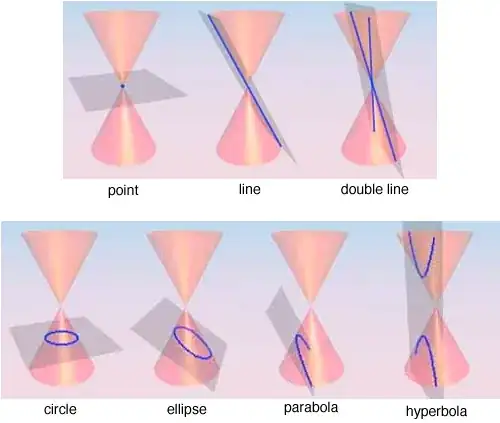Why does the product of equations of straight lines represents 2 straight lines? Why does a 2nd degree equation is so linear?
-
1$(ax+by+c)(a'x+b'y+c')=0 \iff \begin{cases}ax+by+c=0 \ \text{OR} \a'x+b'y+c'=0\end{cases}$ ; the logical "OR" connective is very important because it is in connection whith the set connective "union", that's all : you have the union of two straight lines. – Jean Marie Feb 27 '18 at 19:37
1 Answers
In the language of conics,
\begin{align} 0 &= (ax+by+c)(a'x+b'y+c') \\[10pt] \iff 0 &= \begin{pmatrix} x & y & 1 \end{pmatrix} \begin{pmatrix} aa' & \frac{ab'+a'b}{2} & \frac{ac'+a'c}{2} \\ \frac{ab'+a'b}{2} & bb' & \frac{bc'+b'c}{2} \\ \frac{ac'+a'c}{2} & \frac{bc'+b'c}{2} & cc' \end{pmatrix} \begin{pmatrix} x \\ y \\ 1 \end{pmatrix} \end{align}
Note that
$$\det \begin{pmatrix} aa' & \frac{ab'+a'b}{2} \\ \frac{ab'+a'b}{2} & bb' \end{pmatrix} =-\frac{(ab'-a'b)^2}{4}<0$$
providing non-parallel and
$$\det \begin{pmatrix} aa' & \frac{ab'+a'b}{2} & \frac{ac'+a'c}{2} \\ \frac{ab'+a'b}{2} & bb' & \frac{bc'+b'c}{2} \\ \frac{ac'+a'c}{2} & \frac{bc'+b'c}{2} & cc' \end{pmatrix} =0$$
implying a pair of straight lines.
It's a special case that the section plane cutting the radiant point of the cones.
See another answer here for your interest.
- 18,990
